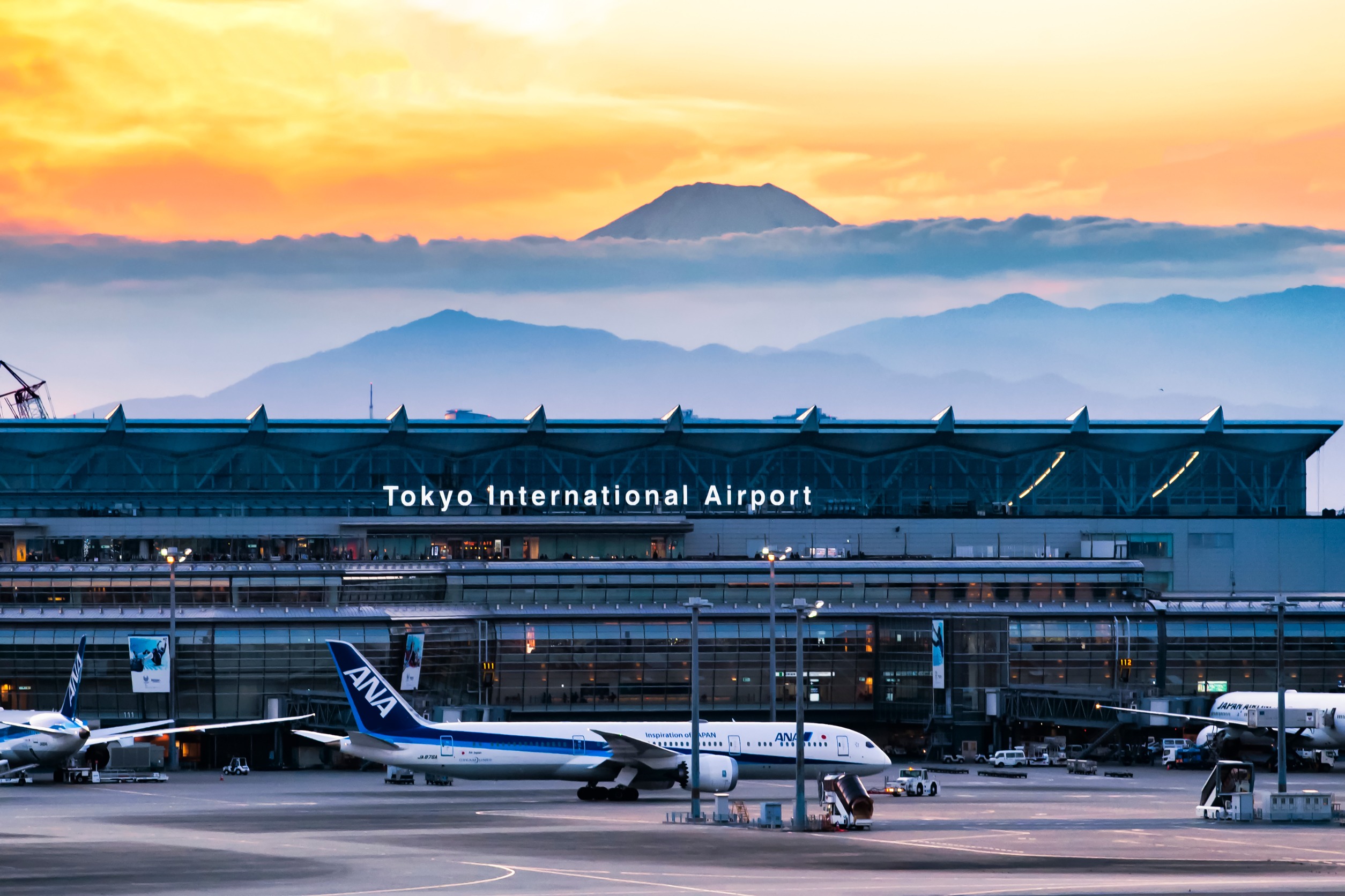International airports in Japan – Japan’s major airports

International Airports in Japan
Japan’s major airports
There are four official international airports in Japan
In Japan, airports that were designated as international civil airports under the Airport Development Law enacted in 1956 as necessary for international air routes are considered international airports. Each of these airports has “international airport” in its official name.
Japan had five international airports: Tokyo International Airport (Haneda Airport), Osaka International Airport (Itami Airport), Narita International Airport (Narita Airport), Kansai International Airport (Kansai Airport), and Central Japan International Airport (Centrair).
Narita and Kansai airports opened due to tight airline demand. Most flights to and from Haneda Airport were transferred to Narita Airport when it opened. However, with the opening of Haneda Airport’s international terminal in 2010, international flights to and from Haneda have increased.
Japan’s aviation infrastructure is governed by the current Airport Law, renamed from the Airport Improvement Law on June 18, 2008. This legislation places emphasis on airports that serve as significant hubs for international and domestic air transportation networks.
Historically, under the Airport Development Law enacted in 1956, there were five “Class I” international civil airports. As mentioned above, these airports, necessary for international air routes, officially bore the name “International Airport”.
However, with the enactment of the current Airport Law, the focus has shifted. While the legal names of these five airports still contain “International Airport”, the law now identifies four of them as crucial hubs for international and domestic air transportation networks. These are Narita International Airport, Kansai International Airport, Tokyo International Airport, and Central Japan International Airport.
In conclusion, while five airports in Japan carry “International Airport” in their official names, under the contemporary legal context of the current Airport Law, four of these are designated as significant international and domestic air transportation network hubs.
Other than the above four airports, there are also international flights to and from other airports.
List of international airports in Japan
| Airport Name | Prefecture |
| Haneda | Tokyo |
| Narita | Chiba |
| Kansai | Osaka |
| Fukuoka | Fukuoka |
| Shin-Chitose | Hokkaido |
| Naha | Okinawa |
| Chubu | Aichi |
| Kagoshima | Kagoshima |
| Sendai | Miyagi |
| Kumamoto | Kumamoto |
| Miyazaki | Miyazaki |
| Nagasaki | Nagasaki |
| Hiroshima | Hiroshima |
| Matsuyama | Ehime |
| Ishigaki | Okinawa |
| Takamatsu | Kagawa |
| Oita | Oita |
| Komatsu | Ishikawa |
| Kitakyushu | Fukuoka |
| Okayama | Okayama |
| Akita | Akita |
| Aomori | Aomori |
| Niigata | Niigata |
| Asahikawa | Hokkaido |
| Ibaraki | Ibaraki |
| Saga | Saga |
| Shizuoka | Shizuoka |
| Yonago | Tottori |
| Toyama | Toyama |
| Hanamaki | Iwate |
| Fukushima | Fukushima |
Many other airports in Japan offer international flights. In most cases, these airports serve countries and regions such as China, South Korea, and Taiwan. Many tourists who come to Japan from these countries and regions arrive at these airports.
Air cargo to and from international airports in Japan
Most air cargo to/from Japan is handled at Narita Airport. Some cargo agents/freight forwarders handle cargo at Kansai International Airport. Few air cargo agents handle cargo at Chubu Airport. Some companies handle airfreight at Sapporo and Fukuoka, but there are very few and their destinations are limited to Asia. In most cases, cargoes are cleared at Narita for loading onto aircraft departing from Haneda, and the airlines arrange ground transportation between Narita and Haneda.
How many international airports are in Japan?
Four airports in Japan have “international” in their names. They are: Narita, Haneda, Chubu, and Kansai. There are other 27 airports with takeoffs and landings of international airlines.
Top 5 Airports in Japan
Number of passengers traveling through Japanese airports
The exact figures change annually due to various factors, and especially given the impact of global events such as the COVID-19 pandemic, numbers can fluctuate quite significantly from year to year. However, to give you an idea, here’s some data from 2019, the year before the pandemic had a major effect on global air travel:
- Tokyo Haneda Airport (HND): Haneda was the busiest airport in Japan, handling over 87.1 million passengers in 2019.
- Narita International Airport (NRT): This airport, located in Narita, east of the center of Tokyo, handled about 43.3 million passengers in 2019.
- Kansai International Airport (KIX): Situated on an artificial island in Osaka Bay, this airport served about 30.3 million passengers in 2019.
- Fukuoka Airport (FUK): Located in Hakata-ku, Fukuoka, this airport managed around 23.8 million passengers in 2019.
- New Chitose Airport (CTS): As the main gateway to Hokkaido, it handled about 22.6 million passengers in 2019.
Conclusion
Japan boasts a well-developed aviation infrastructure with a significant number of international airports spread across the country. While four airports, namely Narita, Haneda, Chubu, and Kansai, carry the distinction of being officially designated international airports, an additional 27 airports also cater to international flights. These airports play a crucial role in facilitating air travel and trade connections with various countries and regions, particularly China, South Korea, and Taiwan. Narita Airport serves as the primary hub for air cargo operations, while Kansai International Airport and Chubu Airport handle a smaller volume of cargo. Although international flights were initially concentrated at Narita Airport, the opening of Haneda Airport’s international terminal in 2010 led to increased international flight operations at Haneda as well. With a network of international airports strategically located throughout the country, Japan continues to welcome visitors from around the world and promote global connectivity in the realm of air transportation.
Interesting facts about airports in Japan
- Onsen (Hot Springs) at Airports: Some airports in Japan, such as Haneda and Narita, offer onsen facilities within their terminals. These hot springs provide a relaxing experience for travelers, allowing them to unwind before or after their flights.
- Robot Assistance: Japanese airports often employ advanced robotic technology to assist passengers. Robot guides and helpers can be found in certain airports, providing directions, language support, and other services to enhance the passenger experience.
- Sleeping Facilities: Many airports in Japan provide dedicated sleeping areas or capsule hotels within the terminals. These facilities cater to passengers with long layovers or early morning flights, offering comfortable resting spaces for a few hours of sleep.
- Art and Cultural Exhibitions: Several airports in Japan showcase art installations and cultural exhibitions throughout their terminals. These displays promote local artists, traditional crafts, and cultural heritage, creating a unique and immersive airport experience.
- Shopping and Dining Variety: Japanese airports boast a wide array of shopping and dining options. From high-end luxury brands to traditional Japanese souvenirs, travelers can find a diverse range of shops and boutiques. Additionally, airports often feature an extensive selection of restaurants offering both local and international cuisine.
- Observation Decks: Many airports in Japan have observation decks that provide panoramic views of the airfield and surrounding areas. These decks are popular among aviation enthusiasts, families, and travelers looking for a vantage point to enjoy the bustling airport atmosphere.
- Airport Gardens: Some airports incorporate beautiful gardens and green spaces within their premises. These gardens offer a tranquil retreat, featuring carefully manicured landscapes, seasonal flowers, and peaceful walking paths, providing passengers with a refreshing break from the airport environment.
- Animal Relief Areas: Recognizing the needs of passengers traveling with pets, Japanese airports have designated animal relief areas. These areas are equipped with facilities for pet comfort and hygiene, ensuring a convenient experience for passengers and their furry companions.










